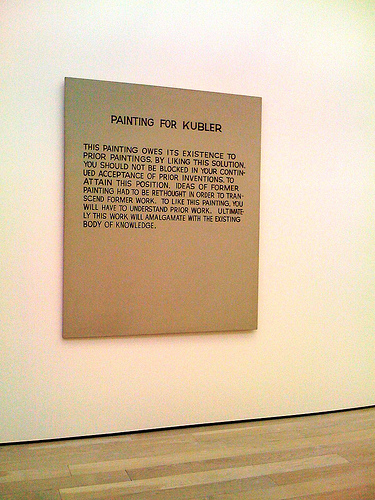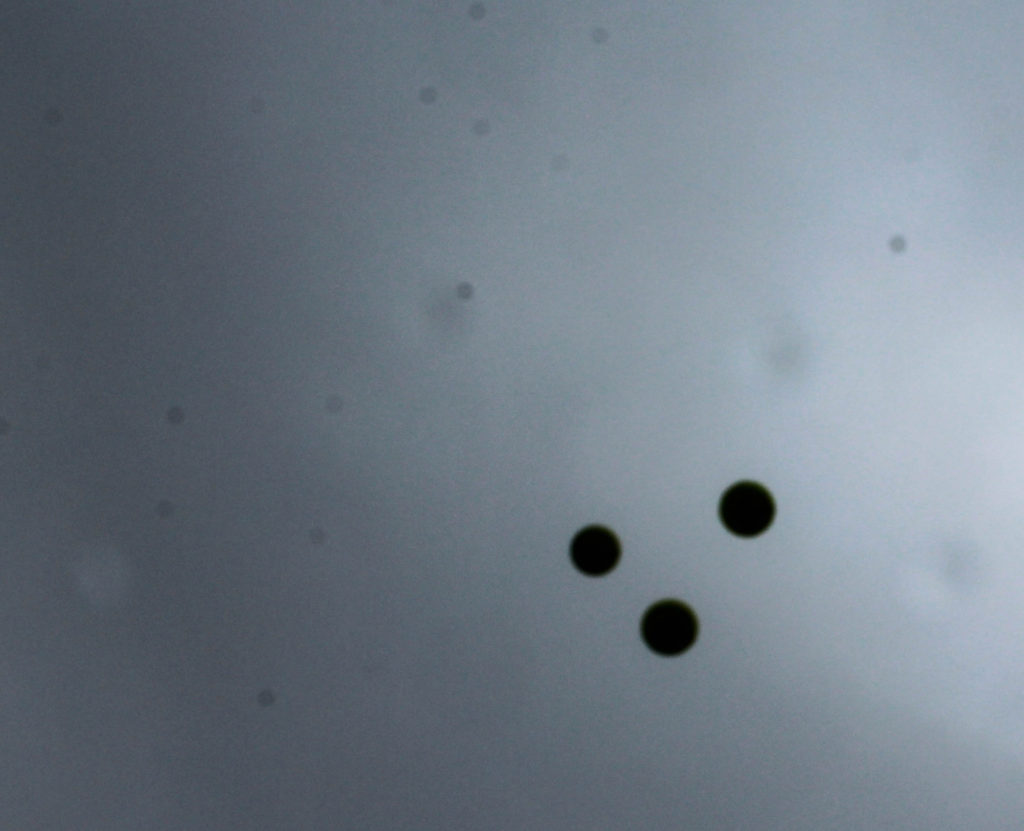
‘Painting For Kubler’ 
‘The Cremation Project’ 
An example of Baldessari’s work with dots
John Baldessari (born June 17, 1931) is an American conceptual artist living and working in Santa Monica and Venice. Baldessari was initially a painter with his early major works being canvas paintings that were empty but for painted statements coming from contemporary art theory. Baldessari’s work ‘Painting for Kubler’ presented the viewer with theoretical intructions on how to view it as well as the importance of the context within his previous works. referenced art historian George Kubler’s book ‘The Shape of Time: Remarks on the History of Things’.
In 1970 Baldessari and some friends burnt all of his paintings created over 13 years to create a new piece, titled ‘The Cremation Project’ and baked the ashes from the paintings into cookies then placed them into an urn leading to an art installation consisting of a bronze commemorative plaque with the destroyed paintings’ birth and death dates, as well as a recipe for making the cookies. Through this project Baldessari drew a connection between atistic practice and the human life cycle.
Baldessari began to experiment with bringing texts and photo into his canvases and then later began to work in printmaking, film, video, sculpture and photography in the 1970’s. His work shows the narrative potential of images and often incorporates language within his art. His art has been featured in more than 200 solo exhibitions in the US and Europe and has influenced artists such as Cindy Sherman.
Many of Baldessari’s works are sequences showing attempts to accomplish an arbitrary goal – an example of this is Throwing Three Balls in the Air to Get a Straight Line (1973) in which Baldessari attempts to do exactly as the title describes and then photographed the results. This project is an early-example of post-conceptual art. Another example of Baldessari’s work that links to post-conceptual art is when he used circular adhesive dots to cover up the faces of subjects which led to him being known as ‘the guy who puts dots over peoples faces’ – the inspiration for this work came from the brightly coloured price-stickers seen on sale items. As part of an experiment coming under the title ‘Play’ I responded to Baldessari’s post-conceptual work; this experiment drew inspiration from both ‘Throwing Three Balls in the Air to Get a Straight Line’ and his work with brightly coloured dots as I attempted to capture three balls in a straight line as Baldessari did. I used the idea of throwing balls in the air to bring in inspiration from Baldessari’s work with brightly coloured dots by throwing a bright yellow dodgeball into the air to contrast with the dark grey sky in the background – this created the same effect as Baldessari’s work by creating an abstract composition that has high contrast between colours and backgrounds.

On his work with placing colourful retail stickers over photographs, Baldessari says “I just got so tired of looking at these faces… If you can’t see their face, you’re going to look at how they’re dressed, maybe their stance, their surroundings” which supports the view that Baldessari’s motivations behind this work was to force the viewer to view the photograph or subject in an unconventional way, a feature often attributed with post-conceptualism. When asked why Baldessari only leaves the mundane parts of the photograph, as the face is the most interesting part, Baldessari responds “I think you really sort of dig beneath the surface and you can see what that photograph is really about, what’s going on”
Post conceptualism is an art theory that builds upon the legacy of conceptual art in contemporary art, where the concepts involved take a bit more priority over the traditional concern for aesthetics. The term first came into art through the influence of Baldessari in the 1970’s through his work Throwing Three Balls in the Air to Get a Straight Line. The movement focused on the idea behind the art and questioned the traditional role of the object.





